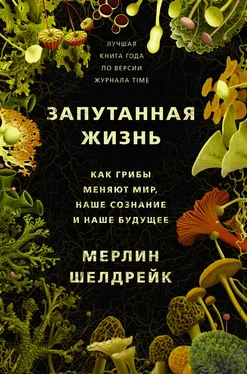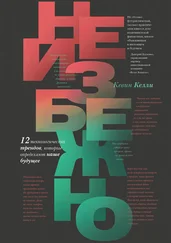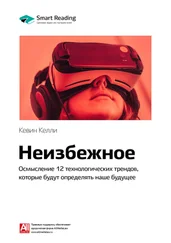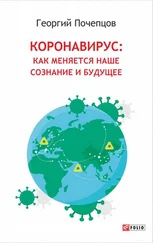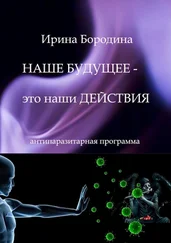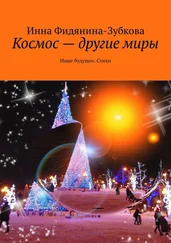Oukarroum A, Gharous M, Strasser RJ. 2017. Does Parmelina tiliacea lichen photosystem II survive at liquid nitrogen temperatures? Cryobiology 74: 160–62.
Ovid. 1958. Ovid: The Metamorphoses . Gregory H., trans. New York, NY: Viking Press.
Pagán OR. 2019. The brain: a concept in flux. Philosophical Transactions of the Royal Society B 374: 20180383.
Paglia C. 2001. Sexual Personae: Art and Decadence from Nefertiti to Emily Dickinson . New Haven, CT: Yale University Press.
Pan X, Pike A, Joshi D, Bian G, McFadden MJ, Lu P, Liang X, Zhang F, Raikhel AS, Xi Z. 2017. The bacterium Wolbachia exploits host innate immunity to establish a symbiotic relationship with the dengue vector mosquito Aedes aegypti. The ISME Journal 12: 277–88.
Patra S, Banerjee S, Terejanu G, Chanda A. 2015. Subsurface pressure profiling: a novel mathematical paradigm for computing colony pressures on substrate during fungal infections. Scientific Reports 5: 12928.
Peay KG. 2016. The mutualistic niche: mycorrhizal symbiosis and community dynamics. Annual Review of Ecology, Evolution, and Systematics 47: 1–22.
Peay KG, Kennedy PG, Talbot JM. 2016. Dimensions of biodiversity in the Earth mycobiome. Nature Reviews Microbiology 14: 434–47.
Peintner U, Poder R, Pumpel T. 1998. The iceman’s fungi. Mycological Research 102: 1153–162.
Pennazza G, Fanali C, Santonico M, Dugo L, Cucchiarini L, Dachà M, D’Amico A, Costa R, Dugo P, Mondello L. 2013. Electronic nose and GC – MS analysis of volatile compounds in Tuber magnatum Pico: Evaluation of different storage conditions. Food Chemistry 136: 668–74.
Pennisi E. 2019a. Algae suggest eukaryotes get many gifts of bacteria DNA. Science 363: 439–40.
Pennisi E. 2019b. Chemicals released by bacteria may help gut control the brain, mouse study suggests. Science : www.sciencemag.org/news/2019/10/chemicals-released-bacteria-may-help-gut-control-brain-mouse-study-suggests [accessed October 29, 2019].
Peris JE, Rodríguez A, Peña L, Fedriani J. 2017. Fungal infestation boosts fruit aroma and fruit removal by mammals and birds. Scientific Reports 7: 5646.
Perrottet T. 2006. Mt. Rushmore. Smithsonian Magazine : www.smithsonianmag.com/travel/mt-rushmore-116396890/ [accessed October 29, 2019].
Petri G, Expert P, Turkheimer F, Carhart-Harris R, Nutt D, Hellyer P, Vaccarino F. 2014. Homological scaffolds of brain functional networks. Journal of The Royal Society Interface 11: 20140873.
Pfeffer C, Larsen S, Song J, Dong M, Besenbacher F, Meyer R, Kjeldsen K, Schreiber L, Gorby YA, El-Naggar MY, et al. 2012. Filamentous bacteria transport electrons over centimetre distances. Nature 491: 218–21.
Phillips RP, Brzostek E, Midgley MG. 2013. The mycorrhizal-associated nutrient economy: a new framework for predicting carbon – nutrient couplings in temperate forests. New Phytologist 199: 41–51.
Pickles B, Egger K, Massicotte H, Green D. 2012. Ectomycorrhizas and climate change. Fungal Ecology 5: 73–84.
Pickles BJ, Wilhelm R, Asay AK, Hahn AS, Simard SW, Mohn WW. 2017. Transfer of 13C between paired Douglas-fir seedlings reveals plant kinship effects and uptake of exudates by ectomycorrhizas. New Phytologist 214: 400–11.
Pion M, Spangenberg J, Simon A, Bindschedler S, Flury C, Chatelain A, Bshary R, Job D, Junier P. 2013. Bacterial farming by the fungus Morchella crassipes. Proceedings of the Royal Society B 280: 20132242.
Pirozynski KA, Malloch DW. 1975. The origin of land plants: A matter of mycotrophism. Biosystems 6: 153–64.
Pither J, Pickles BJ, Simard SW, Ordonez A, Williams JW. 2018. Below-ground biotic interactions moderated the postglacial range dynamics of trees. New Phytologist 220: 1148–160.
Policha T, Davis A, Barnadas M, Dentinger BT, Raguso RA, Roy BA. 2016. Disentangling visual and olfactory signals in mushroom-mimicking Dracula orchids using realistic three-dimensional printed flowers. New Phytologist 210: 1058–71.
Pollan M. 2018. How to Change Your Mind: The New Science of Psychedelics . London, UK: Penguin.
Pollan M. 2013. The Intelligent Plant. The New Yorker : michaelpollan.com/articles-archive/the-intelligent-plant/ [accessed October 29, 2019].
Popkin G. 2017. Bacteria Use Brainlike Bursts of Electricity to Communicate. Quanta : www.quantamagazine.org/bacteria-use-brainlike-bursts-of-electricity-to-communicate-20170905/ [accessed October 29, 2019].
Porada P, Weber B, Elbert W, Pöschl U, Kleidon A. 2014. Estimating impacts of lichens and bryophytes on global biogeochemical cycles. Global Biogeochemical Cycles 28: 71–85.
Potts SG, Biesmeijer JC, Kremen C, Neumann P, Schweiger O, Kunin WE. 2010. Global pollinator declines: trends, impacts and drivers. Trends in Ecology & Evolution 25: 345–53.
Poulsen M, Hu H, Li C, Chen Z, Xu L, Otani S, Nygaard S, Nobre T, Klaubauf S, Schindler PM, et al. 2014. Complementary symbiont contributions to plant decomposition in a fungus-farming termite. Proceedings of the National Academy of Sciences 111: 14500–505.
Powell JR, Rillig MC. 2018. Biodiversity of arbuscular mycorrhizal fungi and ecosystem function. New Phytologist 220: 1059–75.
Powell M. 2014. Medicinal Mushrooms: A Clinical Guide . Bath, UK: Mycology Press.
Pozo MJ, López-Ráez JA, Azcón-Aguilar C, García-Garrido JM. 2015. Phytohormones as integrators of environmental signals in the regulation of mycorrhizal symbioses. New Phytologist 205: 1431–436.
Prasad S. 2018. An ingenious way to combat India’s suffocating pollution. The Washington Post : www.washingtonpost.com/news/theworldpost/wp/2018/08/01/india-pollution/ [accessed October 29, 2019].
Pressel S, Bidartondo MI, Ligrone R, Duckett JG. 2010. Fungal symbioses in bryophytes: New insights in the Twenty First Century. Phytotaxa 9: 238–53.
Prigogine I, Stengers I. 1984. Order Out of Chaos: Man’s New Dialogue with Nature . New York, NY: Bantam Books.
Prindle A, Liu J, Asally M, Ly S, Garcia-Ojalvo J, Süel GM. 2015. Ion channels enable electrical communication in bacterial communities. Nature 527: 59–63.
Purschwitz J, Müller S, Kastner C, Fischer R. 2006. Seeing the rainbow: light sensing in fungi. Current Opinion in Microbiology 9: 566–71.
Quéré C, Andrew RM, Friedlingstein P, Sitch S, Hauck J, Pongratz J, Pickers P, Korsbakken J, Peters GP, Canadell JG, et al. 2018. Global Carbon Budget 2018. Earth System Science Data Discussions : https://doi.org/10:5194/essd-2018-120 [accessed October 29, 2019].
Quintana-Rodriguez E, Rivera-Macias LE, Adame-Alvarez RM, Torres J, Heil M. 2018. Shared weapons in fungus-fungus and fungus-plant interactions? Volatile organic compounds of plant or fungal origin exert direct antifungal activity in vitro. Fungal Ecology 33: 115–21.
Quirk J, Andrews M, Leake J, Banwart S, Beerling D. 2014. Ectomycorrhizal fungi and past high CO2 atmospheres enhance mineral weathering through increased below-ground carbon-energy fluxes. Biology Letters 10: 20140375.
Rabbow E, Horneck G, Rettberg P, Schott J-U, Panitz C, L’Afflitto A, Heise-Rotenburg von R, Willnecker R, Baglioni P, Hatton J, et al. 2009. EXPOSE, an astrobiological exposure facility on the International Space Station – from proposal to flight. Origins of Life and Evolution of Biospheres 39: 581–98.
Raes J. 2017. Crowdsourcing Earth’s microbes. Nature 551: 446–47.
Rambold G, Stadler M, Begerow D. 2013. Mycology should be recognized as a field in biology at eye level with other major disciplines – a memorandum. Mycological Progress 12: 455–63.
Читать дальше
Конец ознакомительного отрывка
Купить книгу
